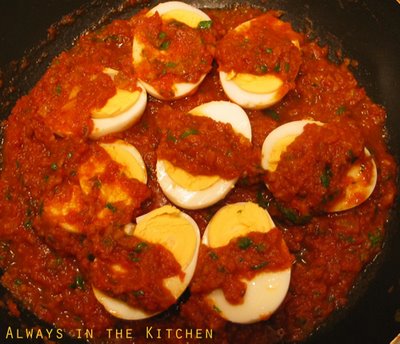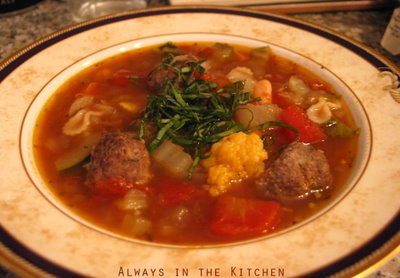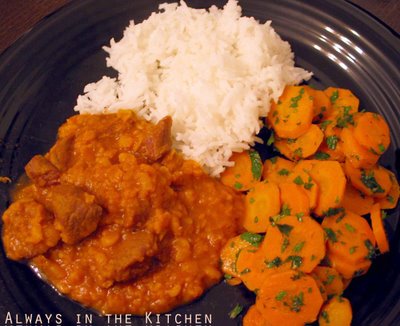 Of course, eggs aren't just breakfast food, or the glue that keeps your cakes and meatloaves from crumbling helplessly as you attempt to slice/eat them. Eggs have an infinite number of possibilities attached to them, whether as the star ingredient or merely an essential component. Merely, of course, practically deserves air-quotes, because there is nothing insignificant about the role of the simple egg in great baking and cooking of our time. Really, there isn't a single culinary nook they haven't invaded: they help breadcrumbs adhere to chicken, they make a dandy snack when stuffed, they are critical to hollandaise and quiche, they make muffins rise better, an egg salad sandwich is a perfect summer lunch... the list goes on.
Of course, eggs aren't just breakfast food, or the glue that keeps your cakes and meatloaves from crumbling helplessly as you attempt to slice/eat them. Eggs have an infinite number of possibilities attached to them, whether as the star ingredient or merely an essential component. Merely, of course, practically deserves air-quotes, because there is nothing insignificant about the role of the simple egg in great baking and cooking of our time. Really, there isn't a single culinary nook they haven't invaded: they help breadcrumbs adhere to chicken, they make a dandy snack when stuffed, they are critical to hollandaise and quiche, they make muffins rise better, an egg salad sandwich is a perfect summer lunch... the list goes on.I also like to have eggs for dinner. Sure, scrambled eggs on toast are a classic and kind of fun breakfast-for-dinner sort of thing to do, but the very best eggs-for-dinner that I know is a family of Indian dishes known as Masala Eggs. (or, Eggs Masala. Or, insert variation of your choice here.) I think of it as a family of dishes because there are literally thousands of variations to choose from - some regional, some preferential, some dictated by your darkest curry desires.
I confess that my (current) very favourite Eggs Masala actually uses the sauce from this Chicken Korma recipe (but pureed smooth with an immersion blender), but I'm happy to have just about any version, and the one shown here has the advantage of feeling very light on the palate, while still being satisfying.
Once again, I have adapted this from Quick and Easy Indian Cooking by the inimitable Madhur Jaffrey.
Hard Boiled Eggs Masala
Serves 2 for lunch, or 4 for dinner as one of several dishes
4 hard-boiled eggs
1/2 teaspoon cayenne pepper
1/2 teaspoon ground turmeric
1 teaspoon ground cumin
1 teaspoon ground coriander seed
1 teaspoon fresh lemon juice
1/2 teaspoon salt
freshly ground black pepper
1 tablespoon canola oil
1/2 teaspoon whole cumin seeds
1/2 small onion, finely chopped
1 tablespoon finely chopped fresh ginger root
1 cup of canned diced tomatoes (with some liquid)
chopped cilantro to taste
Combine ground spices with lemon juice and a tablespoon of water in a small bowl. Mix to create a thin paste.
Heat the oil in a medium-sized non-stick frying pan, over medium heat. Add the cumin seeds, give the pan a shake, then add the onion and ginger. Stir and fry until onion browns nicely. Add the spice paste, and stir and cook for another 15 seconds or so. Add the tomatoes, and bring to a simmer. Reduce the heat, cover, and simmer for about 10 minutes. Stir in the cilantro, and lay the eggs (sliced in half length-wise) onto the sauce. Spoon some of the sauce over the eggs. Serve with rice or naan, or (!) even over toast. For a thinner, smoother sauce, just add a tablespoon or two of water and puree before laying down the eggs.















